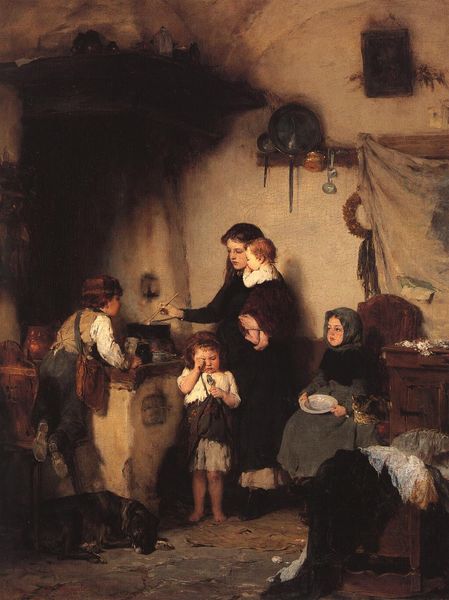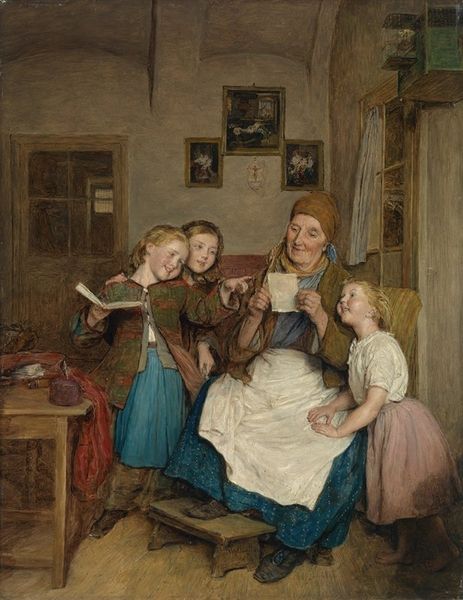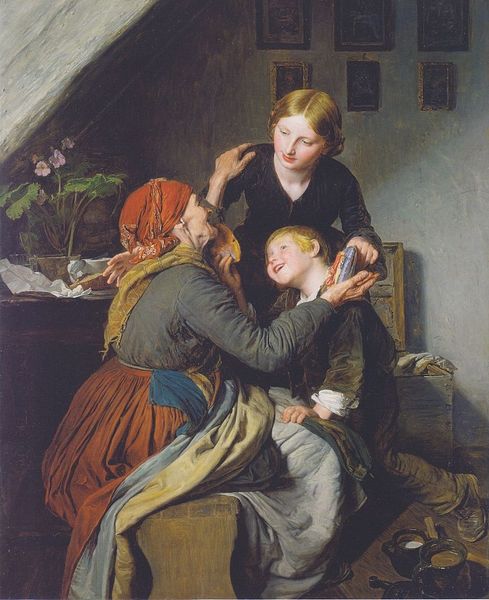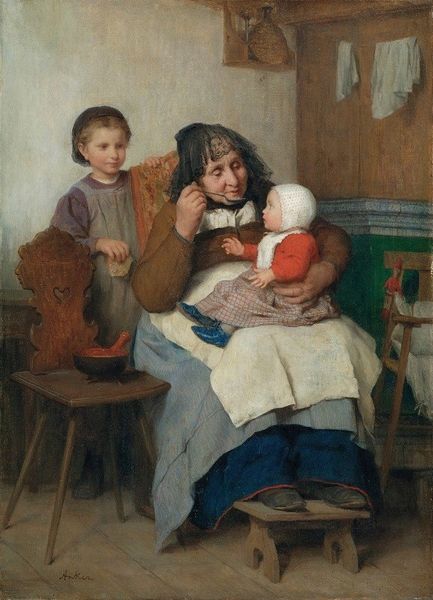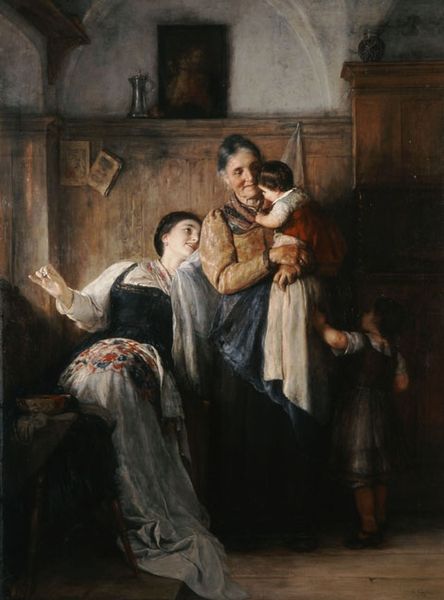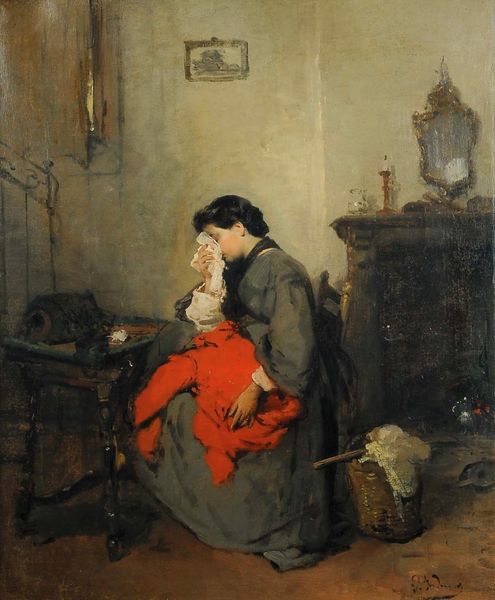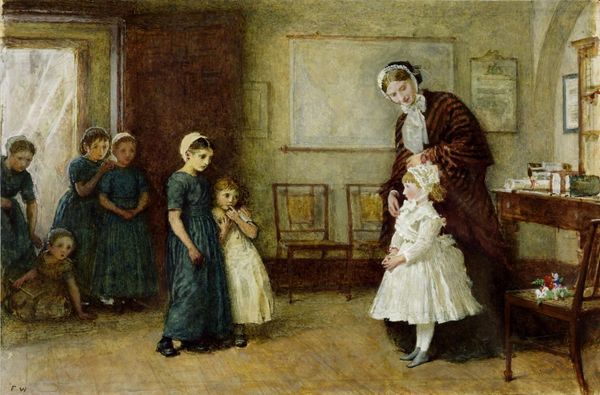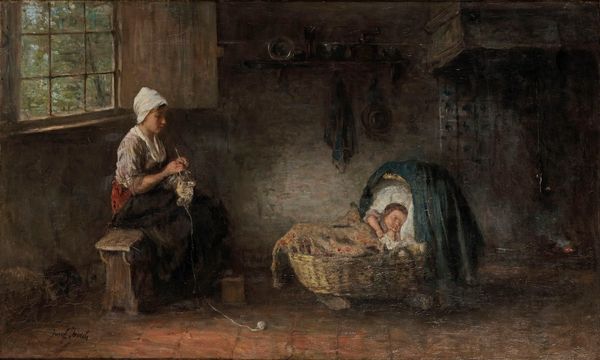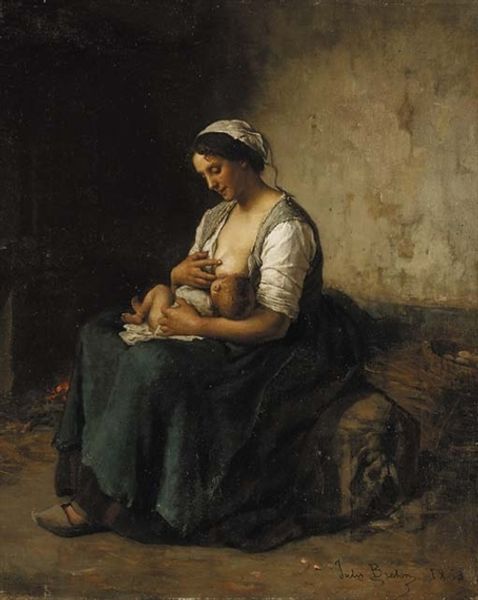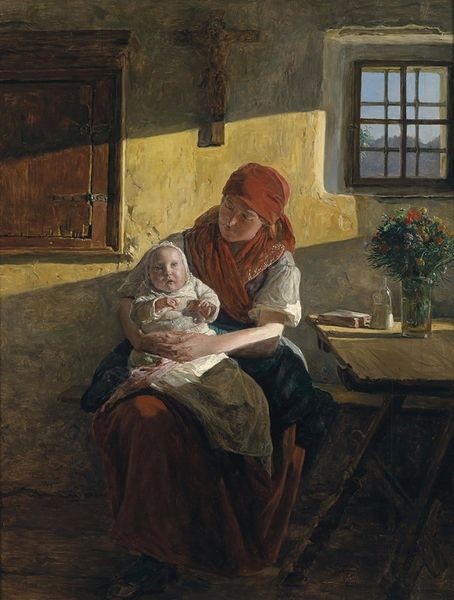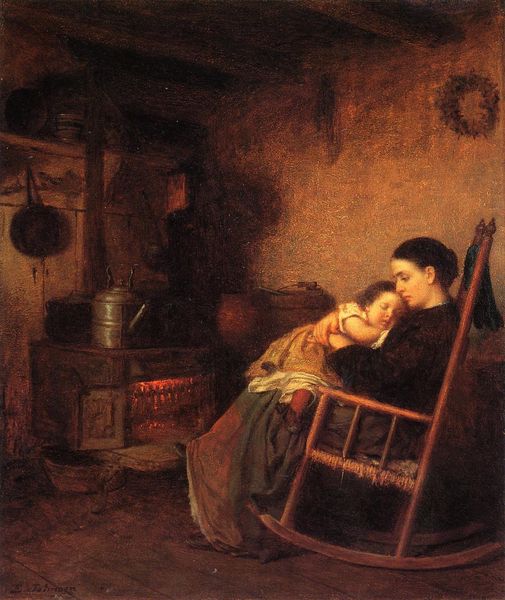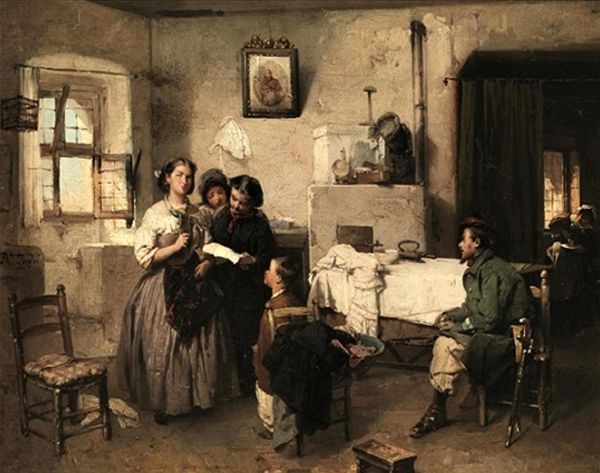
Dimensions: height 46.5 cm, width 38.5 cm, depth 6.4 cm
Copyright: Rijks Museum: Open Domain
Editor: This is "The Evening Prayer" by Pierre-Edouard Frère, painted in 1857. It's an oil painting depicting a mother and her two children at prayer. I notice the textures, especially the fabrics and worn brick. It seems to portray a humble domestic scene. What stands out to you when you look at this piece? Curator: Considering the material context, notice how Frère’s choice of oil paint allows him to mimic the textures of the working-class home. The rough brick, worn clothing – these are deliberately rendered. The scene speaks less of idealized faith and more of the daily labor inherent in maintaining both a home and a spiritual life. Editor: So, you're saying the way he depicts the materials tells us something about their lived experience? Curator: Precisely. Look at the composition itself. The placement of objects, from the straw hat hung on the wall to the scattered clothing on the floor, doesn't scream wealth. These were constructed environments; even the 'artlessness' implies something of labour or lack thereof in their making. It’s the opposite of Rococo’s opulent display, reflecting a different social stratum. The cross implies something; in my view it's more an addition to their daily toil. What are they hoping for? The success of toilsome jobs? It forces you to ask. Editor: I hadn't considered it that way. It's easy to see it as just a simple, sweet moment. Curator: The paintings also highlight gendered division of labour. A maternal subject became increasingly popular among Realist and Academic painters. We should question what this construction achieves in a culture going through major social and economic upheaval, for whom does this idyllic scene function? Editor: That's fascinating. I now notice how meticulously he depicts these materials, lending them significance. Curator: Exactly! The material and the making becomes meaning. Editor: I'll definitely look at art with a new set of eyes going forward, considering the material implications. Curator: Me too. Let's investigate art as a produced product and a reflection of wider socioeconomic practices and realities.
Comments
No comments
Be the first to comment and join the conversation on the ultimate creative platform.
